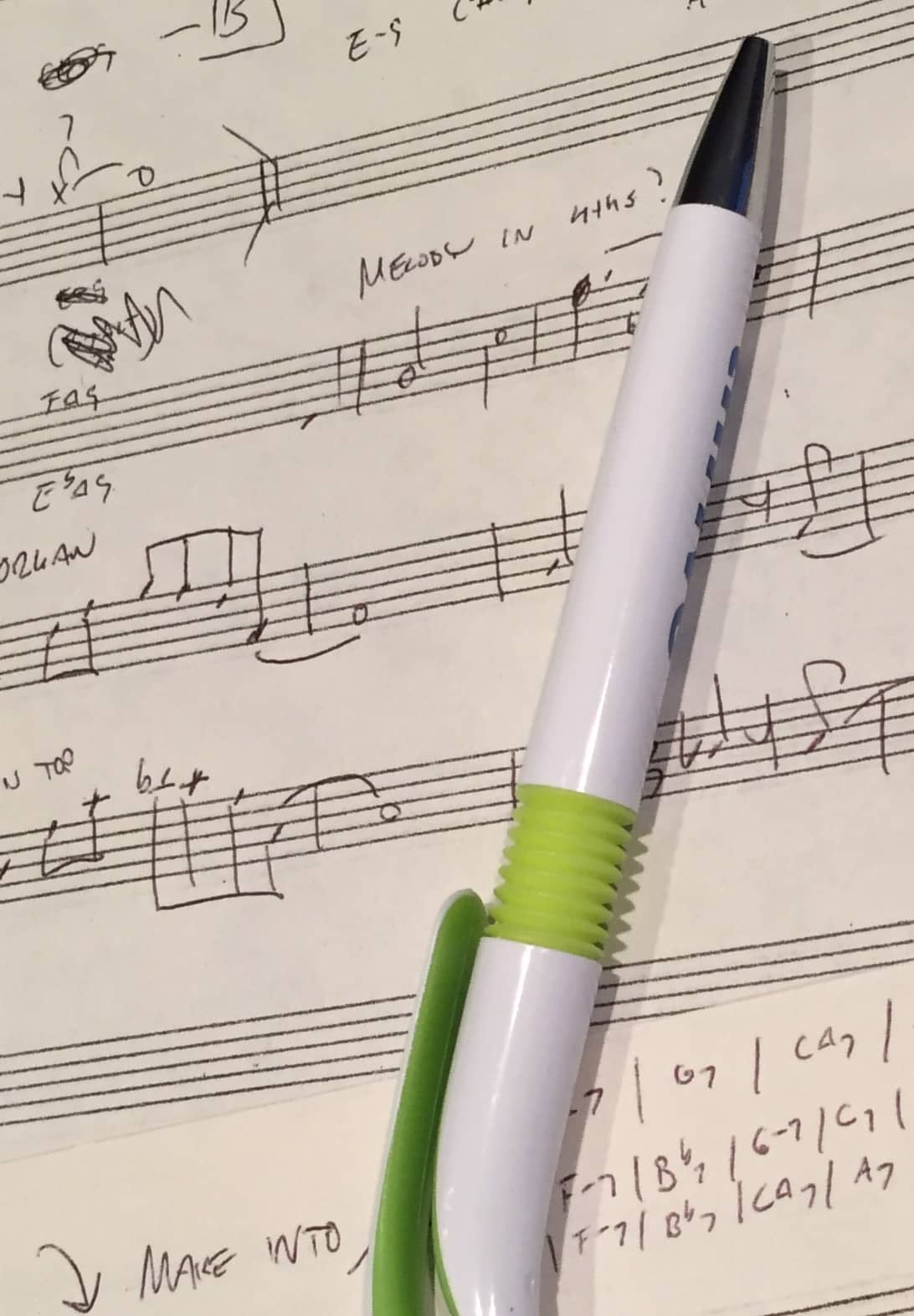How Composing Can Keep You Out of Trouble
How Composing Can Keep You Out of Trouble
That’s right – Jazz Composing can keep you out of trouble.
How CAN composing keep you out of trouble? If you’ve followed this blog then you know this is mostly about improvisation tips. But, composing can help you with your improvisation too. I’ve heard it said (and repeated) that composing is improvisation that you can edit along the way (wouldn’t it be nice to edit our improvisations in real-time? Maybe someday…).
I recently finished a new composition called Dad’s Game that will most likely be on the JKQ’s next album later this year. I wanted to show how I composed it and how I use the idea of “improvisation that you can edit.” If you want to check out more on how I compose you can check out that series HERE.
I usually start with a blank sheet of staff paper (good old analog paper), piano, and Finale open on my computer. There’s no one way to start composing and I don’t do it the same way every time, either. In the case of Dad’s Game, I woke up in the middle of the night a few days ago and had a specific rhythmic figure over a Latin-feel. This is the initial sketch:

From there I sat down with the piano and improvised various chord combinations over the rhythmic vamp. I eventually locked into what I believe was what I heard in the middle of the night (I probably should have taken better notes, but I was half asleep). After deciding on the progression I wanted to come up with the B3 organ’s left hand figure over the vamp. This is where having a strong idea of targeting concepts helped keep me out of trouble (or I could have been spending more time finding the right sound). I knew what notes I was aiming for within the rhythmic figure and it helped me come up with the final idea. Here’s the final sketch (in treble clef):

When you improvise in real-time you must have a system of navigating the chord progression. I’m a BIG proponent of targeting (not sure what I’m talking about? Check more out HERE). When you compose, you will use the same process albeit much slower. You get time to think about your various targeting, melodic, harmonic, and rhythmic options and change them if they don’t sound the way you want (i.e. you get to edit). The more you do the composing process the more solidified they become in your mind. That comes out in your playing.
- How would you suggest to get started on this?
If you’re just starting out I would suggest writing out a chord progression you’re working on. Write out the guide tones or other targets. Compose a line of nothing but quarter notes. Play it back. Does it sound interesting with just the quarter notes? If not, edit it until it does. Once it does, add eighth notes. Sound good? If not, edit it. Once it does, alter the rhythm. Continue, rinse, and repeat.
This is an area I cover with my improvisation students (on Skype and in-person lesson). If you’ve used this process or found it helpful, please feel free to share how you compose to help your improvisation in the comments below OR feel free to share this with the social media buttons!
Thank you for taking the time to read this blog/post. If you’d like to learn more; check out the online school.


